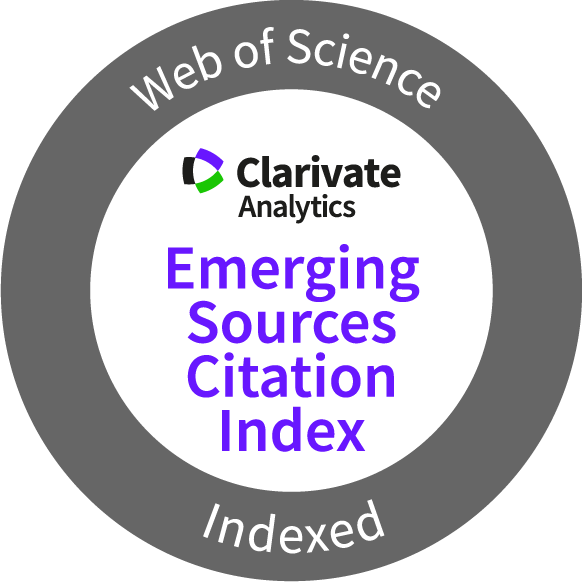Chemistry Journal of Moldova
Physical chemistry and chemical physics
Author(s):
Field: Physical chemistry and chemical physics
Type: Research paper
Issue: 2014 Volume 9, no.2
Pages: 80-89
Natalia Gorinchoy
Field: Physical chemistry and chemical physics
Type: Research paper
Issue: 2014 Volume 9, no.2
Pages: 80-89
Full Text (PDF): Download
DOI: dx.doi.org/10.19261/cjm.2014.09(2).12
Graphical Abstract: The pseudo Jahn-Teller effect is employed to explane the origin of structural distortions of carbonyl fluoride, diazene and ketene molecules in the lowest singlet and triplet excited states. It was shown that in all the cases the distortions of the molecules in the excited states are due to the vibronic mixing of considered states with the appropriate by symmetry higher-lying excited states.
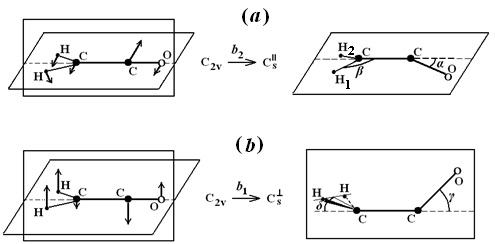
Downloads: 41
Author(s):
Field: Physical chemistry and chemical physics
Type: Research paper
Issue: 2014 Volume 9, no.2
Pages: 90-98
Vasile Gutsanu
Field: Physical chemistry and chemical physics
Type: Research paper
Issue: 2014 Volume 9, no.2
Pages: 90-98
Full Text (PDF): Download
DOI: dx.doi.org/10.19261/cjm.2014.09(2).13
Graphical Abstract: The iodide ions sorption from solutions of KI and KI in excess of KCl has been investigated. The strongly basic anion exchangers AV-17 in Cl- form and Varion AD in NO3- form were used as sorbents. Also AV-17 polymer modified with Bi(III)-containing compounds were used. The sorption was performed in static and dynamic conditions. Isotherms are approximated with BET sorption model. The sorption value of iodide ions in the KI solutions with KCl in excess is quite high. It was established that sorption of iodide ions in the form of polyiodide occurs both as a result of anion exchange and as a result of chemisorption.
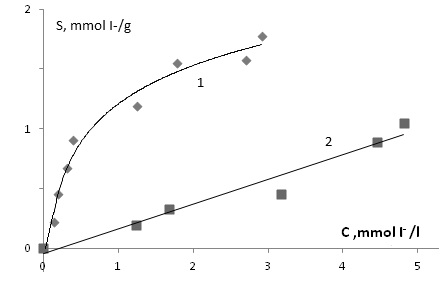
Downloads: 33
Author(s):
Field: Physical chemistry and chemical physics
Type: Research paper
Issue: 2014 Volume 9, no.2
Pages: 99-106
Lilia Anghel
Field: Physical chemistry and chemical physics
Type: Research paper
Issue: 2014 Volume 9, no.2
Pages: 99-106
Full Text (PDF): Download
DOI: dx.doi.org/10.19261/cjm.2014.09(2).14
Graphical Abstract: The multitude of physiological processes in which the binding of iron ions takes part makes its mechanism worth investigating. The multiple sequence alignment method was applied to investigate the structure similarities of five lactoferrin X-ray crystallographic structures and outline the differences and similarities between lactoferrin and serum transferrin. The results of this study provide useful insights into the mechanism of iron-binding of lactoferrin molecule.
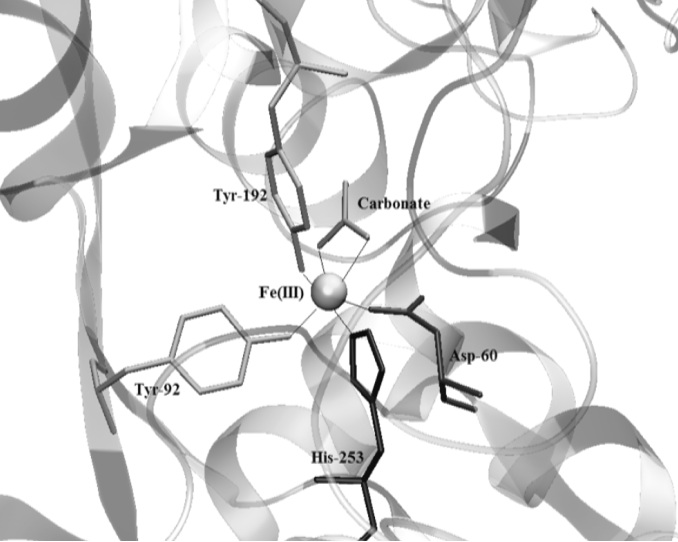
Downloads: 77
Author(s):
Field: Physical chemistry and chemical physics
Type: Short communication
Issue: 2014 Volume 9, no.2
Pages: 107-110
Marharyta Vasylieva, Taras Gromovoy
Field: Physical chemistry and chemical physics
Type: Short communication
Issue: 2014 Volume 9, no.2
Pages: 107-110
Full Text (PDF): Download
DOI: dx.doi.org/10.19261/cjm.2014.09(2).15
Graphical Abstract: Proteins are the main components of living systems therefore they are a subject of study from different points of view. Under certain conditions, proteins are capable of self-organization forming oligomeric structures of various composition and new properties. The investigations of these transformations were carried out on two well known proteins: albumin and lyzozyme. It is shown that associates of albumin and lysozyme are formining in the stoichiometric ratios of 1:1, 1:2, 1:3, 1:4. A similar pattern is observed in the case of albumin dimer.
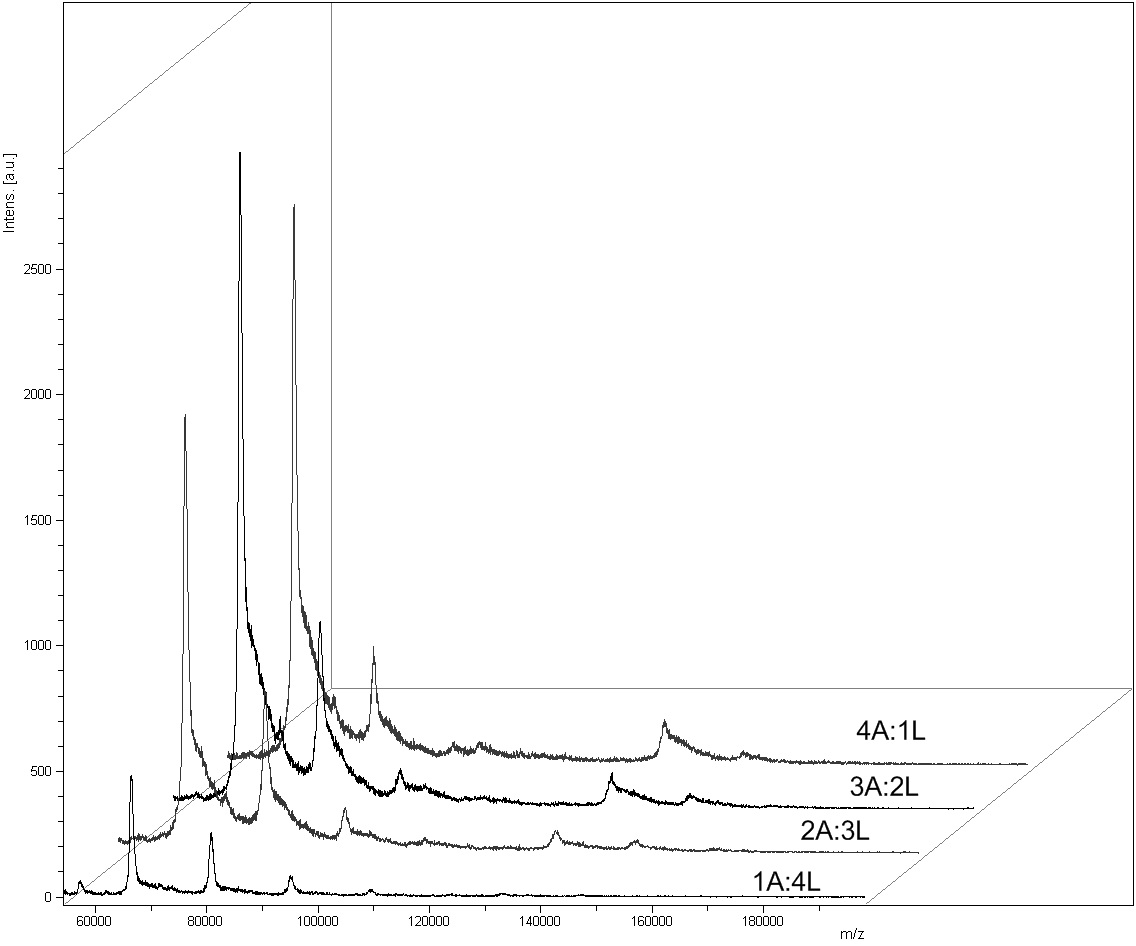
Downloads: 84
Author(s):
Field: Physical chemistry and chemical physics
Type: Research paper
Issue: 2014 Volume 9, no.1
Pages: 112-116
Irina Davidenko
Field: Physical chemistry and chemical physics
Type: Research paper
Issue: 2014 Volume 9, no.1
Pages: 112-116
Full Text (PDF): Download
DOI: dx.doi.org/10.19261/cjm.2014.09(1).14
Graphical Abstract: Polarization sensitive holographic recording was accomplished in new synthesized azobenzene polymer composites with Co metallic polycomplexes of different structure.
Downloads: 29
Author(s):
Field: Physical chemistry and chemical physics
Type: Research paper
Issue: 2014 Volume 9, no.1
Pages: 117-122
Nicolay Davidenko, Irina Davidenko, Nicolay Chuprina, Yuriy Getmanchuk., Leonid Kostenko, Elena Mokrinskaya, Valeriy Pavlov, Sergey Studzinsky, Larisa Tonkopieva
Field: Physical chemistry and chemical physics
Type: Research paper
Issue: 2014 Volume 9, no.1
Pages: 117-122
Full Text (PDF): Download
DOI: dx.doi.org/10.19261/cjm.2014.09(1).15
Graphical Abstract: Information properties of recording media based on electrons donor oligomer of different structure for thermoplastic technique are investigated.
Downloads: 21
Author(s):
Field: Physical chemistry and chemical physics
Type: Research paper
Issue: 2014 Volume 9, no.1
Pages: 123-127
Inna Melnyk
Field: Physical chemistry and chemical physics
Type: Research paper
Issue: 2014 Volume 9, no.1
Pages: 123-127
Full Text (PDF): Download
DOI: dx.doi.org/10.19261/cjm.2014.09(1).16
Graphical Abstract: Current paper focuses on the analysis of influence of main factors (stages of the synthesis, the ratio of the reacting components, the order of their introduction, the concentration of water and ammonia, the synthesis temperature) on the morphology, size and content of functional groups of aminosilicanano- and submicrospheres. The recommendations for the synthesis of particles with predetermined properties were done. It is shown, that the ratio of the reacting components mainly affects the content of 3-aminopropyl functional groups and the temperature of the hydrolytic polycondensation reaction - the size of the particles.
Downloads: 47
Author(s):
Field: Physical chemistry and chemical physics
Type: Research paper
Issue: 2014 Volume 9, no.1
Pages: 128-131
Ion Geru, Olga Bordian, Constantin Loshmansky, Ion Culeac, Constantin Turta
Field: Physical chemistry and chemical physics
Type: Research paper
Issue: 2014 Volume 9, no.1
Pages: 128-131
Full Text (PDF): Download
DOI: dx.doi.org/10.19261/cjm.2014.09(1).17
Graphical Abstract: In this paper we present experimental results on preparation and characterization of colloidal CdSe quantum dots in organic solvent. CdSe QDs were synthesized following a modified literature method.
CdSe QDs were isolated by adding acetone to the cooled solution followed by centrifugation.
CdSe QDs have been characterized by UV-Vis absorption and photoluminescent (PL) spectroscopy. The average CdSe particles size estimated from the UV-Vis absorption spectra was found to be in the range 2.28-2.92 nm which is in good agreement with PL measurements.
Downloads: 101
Author(s):
Field: Physical chemistry and chemical physics
Type: Review
Issue: 2013 Volume 8, no.2
Pages: 32-41
Lilia Anghel, Gheorghe Duca
Field: Physical chemistry and chemical physics
Type: Review
Issue: 2013 Volume 8, no.2
Pages: 32-41
Full Text (PDF): Download
DOI: dx.doi.org/10.19261/cjm.2013.08(2).03
Graphical Abstract: Iron-based nanoparticles have gained a lot of attention due to their properties which offer a broad range of biomedical and industrial applications. Traditional methods of synthesis of iron nanoparticles strongly influence their properties and limit their applicability. Recently, there has been a growing interest in the development of biological routes of syntheses of iron nanoparticles as the resulting particles have structural characteristics required by biomedical field. The mechanism for the synthesis of iron-based nanoparticles by microorganisms and its current limitation are presented.
Downloads: 53
Author(s):
Field: Physical chemistry and chemical physics
Type: Research paper
Issue: 2013 Volume 8, no.1
Pages: 90-94
N. Timbaliuc, T. Lupascu
Field: Physical chemistry and chemical physics
Type: Research paper
Issue: 2013 Volume 8, no.1
Pages: 90-94
Full Text (PDF): Download
DOI: dx.doi.org/10.19261/cjm.2013.08(1).11
Graphical Abstract: The adsorption properties of activated carbons, obtained from local raw materials (nut shells, peach and plum stones), towards Congo Red and vitamin B12 have been studied. The values of adsorption of these marker-substances are in direct correlation with the structural characteristics of the studied samples of activated carbons, in particular, with their mesopore volume.
Downloads: 33


